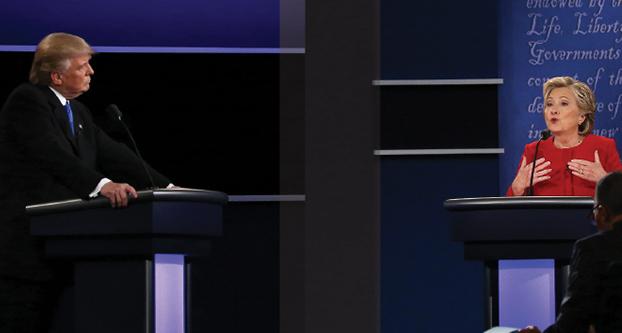Hillary Clinton wants to make college free, and Donald Trump wants to make sure the business of college works well. The two presidential candidates have very different plans to try and help college students. Both could alter the system we have in place, and both would benefit students.
A fact sheet released by the Clinton campaign entitled, “The New College Compact,” said, “We will move toward a future in which no one has to take out a loan to go to college. Free tuition and fees at four-year schools for students from families with income up to $125,000, and free tuition and fees at community colleges for students of all income levels, which helps these students graduate debt-free.”
In addition, the Clinton campaign has designed policies with the idea of helping individuals with existing student loans and brand new student loans. The Clinton campaign has said it wants to help people “refinance their student loans at current rates.”
It also wants to “simplify, expand and develop options for auto-enrollment in income-based repayment.”
Clinton maintains that: “College debt should be forgiven after 20 years — 10 years if a borrower works in the public interest.” She also wants to provide relief to debt holders who are trying to start a business or “social enterprise by deferring loans with no payments or interest for up to three years.”
Also proposed is a “three-month moratorium on federal student loan payments during Clinton’s first year.” This would allow all people with student debt to be given help to be able to save money on their loans.
Michael D. Evans, chairman of the Fresno County Democratic Party, said, college debt is an undue burden for students.
“The important thing to note is that Hillary Clinton is addressing a serious problem in a positive way,” Evans said. “Not only does her plan remove the burden of student debt, but it provides an economic impetus because graduates will be able to reap the benefits of their entire salary.”
The fact sheet released by the Clinton campaign says: “States must apply for funding under the New College Compact. They will receive significant federal investments under the plan but must commit to reinvesting in higher education over time, eliminating tuition and fees for working families and keeping costs in check for families of all income levels while promoting innovation and accountability to ensure students are graduating and are prepared for the workforce.”
All students enrolled in college at that time will also be expected to work at least 10 hours per week to “help defray the full cost of attendance.”
In the fact sheet the Clinton campaign describes how the costs will be recovered as, “This cost is fully paid for by closing tax loopholes and expenditures for those at the top and will not add a dime to the debt over the next 10 years. The Committee for a Responsible Federal Budget has found that the $500 billion cost could in fact be paid for by closing loopholes for high-income earners and businesses.”
Evans said that executive action may be needed if Congress won’t do its job.
“As for congressional versus executive action, long-term permanent change will likely require congressional action. And that will not be forthcoming if the Congress is Republican controlled or if the houses are split between the two parties,” Evans said. “Therefore, it might be necessary for Clinton to piecemeal these measures through executive action. Unfortunately, that has become a new method of functional governance given the dysfunctionality of Congress.”
Sam Clovis, co-chairman and policy adviser for the Trump campaign, has proposed possible policies in regards to higher education policy.
He said there needs to be an overhaul of the federal student lending system back to private banks as it was before.
“Government should not be in the student loan business, which turned in a $41.3 billion profit in 2013,” he said. Clovis said this should be an area where the government should not make money, Clovis said.
He added that colleges need to have skin in the game and share the risks of lending.
“These risks need to change the way colleges admit students and what programs are offered. Colleges should be admitting students who can complete their degrees and obtain employment which is a cooperation between the student, college and local banks,” Clovis said. “Too often ”” and I have a family member who went through this ”” students obtain a degree they cannot use and find minimum-wage employment. Trump’s higher education ideas are putting a long term emphasis on the student and life after college, which is proving to be more effort than previous administrations.”
Guillermo Moreno, California Republican Party associate representative, said it’s important for college to not be free.
“As a conservative with six figures of college debt myself, I can attest to how expensive my education has been. My education has opened many doors, but at a great financial cost,” Moreno said. “College should never be free because someone, somewhere has to pay for this. Giving away such a precious opportunity would diminish its very value. As Secretary Clinton has said herself on the campaign trail … ‘If something is free … you better check the fine print.’
Moreno said the struggle of college is worth it.
Moreno said, “So, Bulldogs, work hard and never give up because it will be all worth it.”




